A punt boat is a flat-bottomed watercraft that is designed for use in small rivers and shallow water. It is propelled by a pole, which is pushed against the riverbed by the punter. The boat has a square-cut bow and a broad front, which makes it ideal for carrying cargo or passengers.
Punting is the act of boating in a punt, and it has become a popular recreational activity in many parts of the world. The punter stands at the back of the boat and uses a long pole to propel the boat forward.
This requires skill and balance, as the punter must navigate through shallow waters and avoid obstacles such as rocks and fallen branches.
Punt boats have a long history and were originally used as cargo boats or platforms. They were popular in the 19th century and were used to transport goods and people along small rivers and canals. Today, punt boats are primarily used for recreational purposes, and they can be found in many tourist destinations around the world.
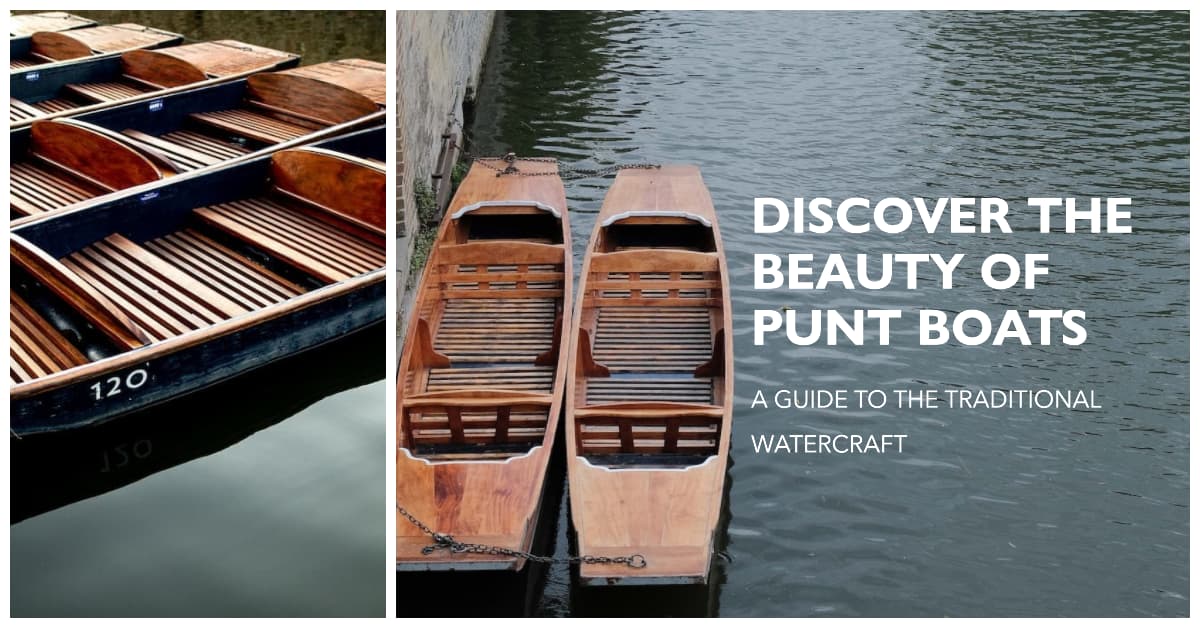
Understanding Punt Boats
A punt boat is a flat-bottomed boat with a square-cut bow, designed for use in small rivers and shallow water. Punting is boating in a punt; the punter propels the punt by pushing against the river bed with a pole. Punts were originally built as cargo boats or platforms and were used for transporting goods across shallow waterways.
Punt boats are typically constructed using wood, aluminum, or fiberglass. Wooden punt boats are the most traditional and are still popular today. They are usually made from lightweight woods such as cedar or pine, which makes them easy to maneuver.
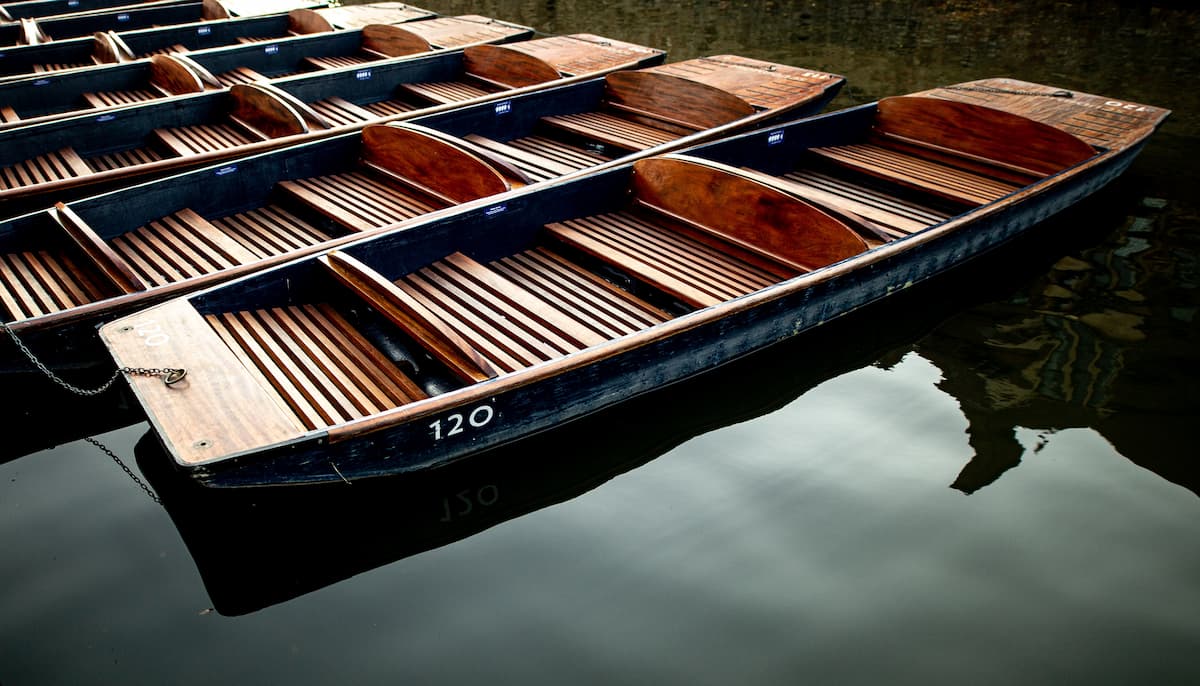
The weight of a punt boat depends on its construction material and size. A small wooden punt boat can weigh as little as 50 pounds, while a larger aluminum or fiberglass punt boat can weigh up to 200 pounds.
The construction of a punt boat includes a ladder-like frame, a keel, a stem, a sternpost, and a counter. The ladder-like frame is the foundation of the boat and supports the planks that make up the bottom and sides.
The keel is a long, narrow piece of wood that runs along the bottom of the boat and helps to stabilize it. The stem is the front of the boat, and the sternpost is the back. The counter is the part of the boat that extends beyond the sternpost.
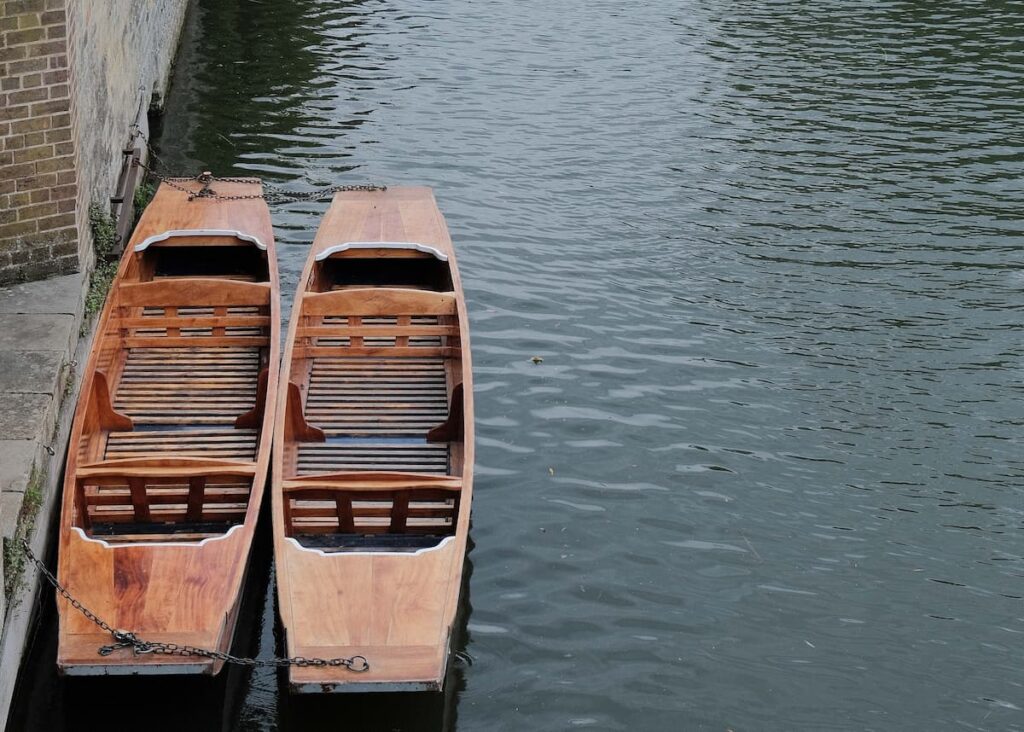
Punt boats are flat-bottomed, which makes them stable and easy to maneuver in shallow water. They are also easy to beach, which means they can be pulled up onto the shore without damaging the boat.
In conclusion, punt boats are flat-bottomed boats designed for use in shallow water. They are typically constructed using wood, aluminum, or fiberglass and are lightweight and easy to maneuver. The ladder-like frame, keel, stem, sternpost, and counter are all important parts of the construction of a punt boat.
Historical Usage of Punt Boats
Punt boats have a long and rich history of use in various industries, including cargo transportation, fishing, and hunting.
In the 18th century, punts were commonly used as cargo boats or platforms. George Washington’s records show that punts were used by hired and enslaved workers to move between his farms and to transport goods to Alexandria and Georgetown.
Punt boats were also used as work boats for various tasks such as dredging, maintenance work, and surveying. The flat-bottomed design of the punt made it ideal for navigating shallow waters and narrow canals, allowing workers to easily access hard-to-reach areas.
In addition to cargo and work, punt boats were also used for recreational purposes such as fishing. The flat-bottomed design of the punt made it stable in the water, providing a secure platform for anglers to fish from.
Punt boats were also used for hunting waterfowl. In the late 19th century, hunters would use a punt gun, a large shotgun mounted on a punt boat, to hunt waterfowl. The punt gun was capable of firing up to a pound of shot at a time, making it a highly effective tool for hunting.
Overall, the historical usage of punt boats has been diverse and varied. From cargo transportation to recreational fishing and hunting, the flat-bottomed design of the punt has made it a versatile and valuable tool for navigating shallow waters and narrow canals.
Punting
Punting is the act of boating in a punt, a flat-bottomed boat with a square-cut bow designed for use in small rivers and shallow waters. The punter propels the punt by pushing against the river bed with a pole, also known as a punt pole.
Punting is a popular activity in many rivers, including the Thames, the Cherwell, and the Cam. The punter stands at the back of the punt with the pole in hand and uses it to push against the river bed, propelling the boat forward. The punt pole is usually made of wood and can vary in length from 10 to 20 feet, depending on the depth of the river.
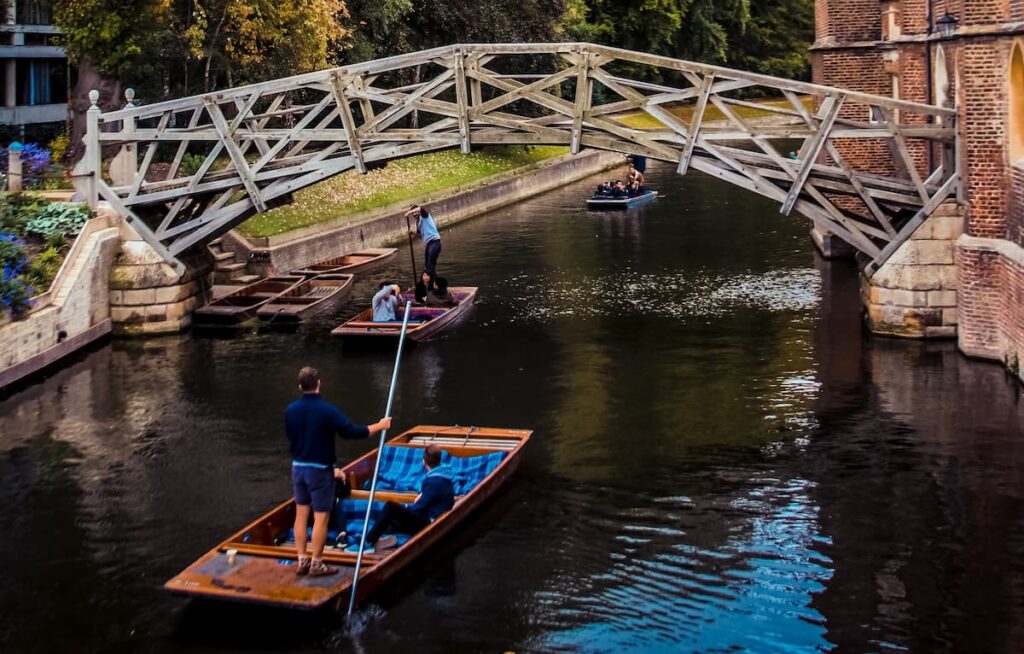
Unlike rowing, where the oars are used to pull the boat through the water, punting is all about pushing. The punter must use their body weight and strength to push the pole down into the river bed, then use it to push the boat forward. It takes practice to become proficient at punting, but it can be a relaxing and enjoyable way to spend an afternoon on the water.
Punting is best suited for calm and shallow waters, such as small rivers and canals. The shallow draft of the punt allows it to navigate waters that are too shallow for other boats. The punter must be careful when navigating shallow waters, as the punt can easily get stuck in the river bed.
Overall, punting is a unique and enjoyable way to experience the beauty of small rivers and shallow waters. It requires some skill and practice, but anyone can learn how to punt with a bit of patience and determination.
Punt Boats in Recreation
Punt boats are versatile watercraft that can be used for a variety of recreational purposes. They are particularly popular for pleasure trips and camping trips, as they are easy to maneuver and can navigate shallow waters that other boats cannot.
Pleasure punts are a type of punt boat that are specifically designed for leisure activities. They are typically wider and more stable than other types of punts, and often have a canopy or awning to provide shade for passengers. These boats are popular with tourists and can be rented for short trips or longer excursions.
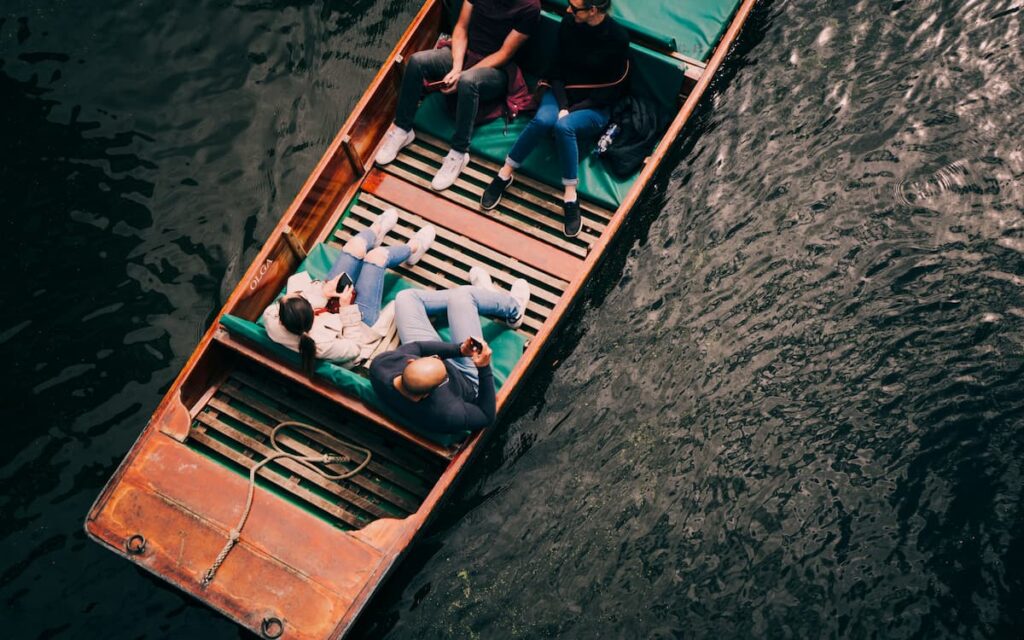
Punt boats are also used for racing and regattas. The Thames Valley Skiff Club, Wraybury Skiff and Punting Club, and The Skiff Club are just a few examples of organizations that host punting races and events. Racing punts are typically longer and narrower than pleasure punts, and are designed for speed rather than comfort.
One unique feature of punt boats is the swallow tail design, which is a distinctive V-shape at the stern of the boat. This design allows for greater maneuverability and speed, making it popular for racing and competition.
Scudamore’s Punting is a well-known punting company that offers tours and rentals in Cambridge, England. They have been in operation since 1910 and have a fleet of over 150 punts. Punting is a popular activity in Cambridge and other cities around the world, and is a great way to explore the local waterways and scenery.
Overall, punt boats are a popular choice for recreation and leisure activities. They are versatile, easy to maneuver, and can be used for a variety of purposes, from pleasure trips to racing and competition.
Punt Boats in Sports
Punt boats have been used for centuries for transportation and recreation, but they have also found a place in sports. In this section, we will discuss the role of punt boats in various sports.
Racing
Punt boat racing is a popular sport in many countries, including England and Australia. In punt boat races, competitors race against each other in flat-bottomed boats propelled by a long pole. The races can be held on rivers, lakes, or canals, and the distance of the race can vary from a few hundred meters to several kilometers. Punt boat races can be very exciting, as the boats are often close together and the race can be won or lost by just a few seconds.
Regattas
Punt boats are often used in regattas, which are multi-boat races that can include a variety of different types of boats. In regattas, punt boats can be used for both racing and recreational purposes. They are often used in the “fun” races, where the emphasis is on having a good time rather than winning.
NFL
While punt boats are not used in the NFL, the term “punt” is used to describe a type of play in American football. In a punt play, the team on offense kicks the ball as far down the field as possible, with the goal of forcing the other team to start their offensive drive as far back on the field as possible. The punter is the player who kicks the ball, and he is often one of the most important players on the team.
Argument
There has been some argument over the years about whether punt boat racing should be considered a “real” sport. Some people argue that it is not a true sport because it does not require a high level of physical fitness or skill. Others argue that it is a legitimate sport because it requires a great deal of mental focus and strategy. Ultimately, whether or not punt boat racing is considered a sport is a matter of opinion.
In conclusion, punt boats have found a place in various sports, including racing and regattas. While they are not used in the NFL, the term “punt” is used to describe a type of play in American football. There has been some argument over the years about whether punt boat racing should be considered a “real” sport, but ultimately, it is up to each individual to decide.
Punt Boats in Hunting
Punt boats have been used for centuries in hunting, particularly for fowling and angling. These boats are designed with a flat bottom and a square-cut bow, which makes them ideal for use in small rivers and shallow waters. Punting is the act of boating in a punt, where the punter propels the punt by pushing against the river bed with a pole.
One of the most notable uses of punt boats in hunting is for waterfowl hunting. In the 19th century, hunters used a massive shotgun called a punt gun, which was mounted to the front of a shallow draft duck boat called a punt.
The punt gun was so large that it could take down an entire flock of birds with a single shot. Professional wing shooters working together could harvest an entire flock using a small fleet of punt boats. While 419 birds in one day is an often-cited American record, numerous market hunters claimed to have killed over a thousand ducks in a single day.
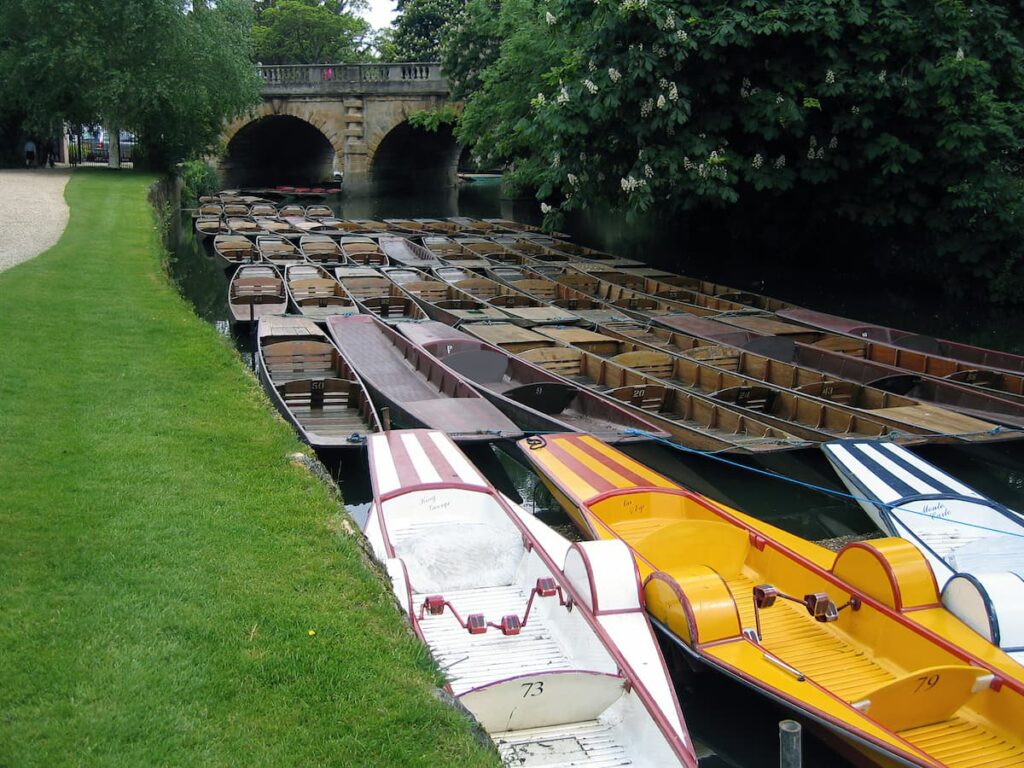
Punt boats were also used for angling, particularly in the United Kingdom. Anglers would use a punt to navigate shallow waters and cast their lines into the water. The flat bottom of the punt allowed anglers to stand up and cast their lines without worrying about losing their balance. Additionally, the punt’s quiet nature allowed anglers to sneak up on fish without alerting them.
While punt guns are no longer used for hunting, punt boats are still used for recreational activities such as punting, fishing, and sightseeing. They are particularly popular in the United Kingdom, where they are often rented out for tourists to explore the rivers and canals. In recent years, punt boats have also become popular in other parts of the world, particularly in the United States, where they are used for recreational activities such as birdwatching and photography.
Overall, punt boats have a rich history in hunting, particularly for waterfowl hunting and angling. While their use in hunting has declined over the years, they remain a popular recreational activity for those looking to explore shallow waters and enjoy the outdoors.
Cultural Significance of Punt Boats
Punt boats have a rich cultural significance in many parts of the world. They are particularly popular in Cambridge and Oxford, where students and tourists alike enjoy punting on the River Cam and the River Cherwell. Punting in these areas has become a cultural tradition that has been passed down from generation to generation.
In London, punt boats can be found on the Thames, and they are often used for leisurely trips down the river. Punting has also become a popular pastime in Falmouth, where the Falmouth Quay Punt is a common sight on the water.
Punt boats are not limited to the UK, however. In Norfolk, the Norfolk Punt is a popular sailboat that is used for racing and leisure. In Canada, punt boats are often used for fishing, while in Australia, they are popular for exploring the country’s many waterways.
Perhaps the most famous type of punt boat is the gondola, which is synonymous with Venice. Gondolas have been used in Venice for centuries, and they are a symbol of the city’s rich history and culture.
Overall, punt boats have become an important part of many cultures around the world. They are used for a variety of purposes, from leisurely trips down the river to racing and fishing. Whether you are in Cambridge, Venice, or anywhere in between, there is a good chance that you will come across a punt boat at some point.
Construction and Design of Punt Boats
Punt boats are flat-bottomed boats with a square bow, designed for use in small rivers or other shallow and mostly calm waters. Punting is what one does in a punt. The punter propels the punt by pushing against the riverbed with a pole. If using an oar, one is probably in a gondola.
A traditional river punt differs from many other types of wooden boats in that it has no keel, stem, or sternpost. Instead, it is built rather like a ladder with the main structure being two side panels connected by a series of cross planks, known as “treads”, spaced about 1 foot (30 cm) apart. The treads are usually 4 inches (10 cm) wide and are fastened to the side panels with nails or screws.
Punt boats are typically constructed from wood, aluminum, or fiberglass. Wooden punts are the most traditional and are still commonly used today. The type of wood used in the construction of a punt can vary, but typically, a hardwood such as oak, elm, or ash is used.
The weight of a punt boat can vary depending on the material used in its construction. A wooden punt can weigh anywhere from 100-200 pounds, while an aluminum or fiberglass punt can weigh significantly less.
Caulking is an important part of the construction of a wooden punt boat. It is used to seal the seams between the planks and prevent water from entering the boat. Traditionally, oakum, which is made from old ropes and tar, was used for caulking. Today, modern materials such as silicone or epoxy are used.
Overall, the ladder-like construction of a punt boat, combined with its flat bottom, makes it an ideal vessel for navigating shallow waters. Its simple design also makes it relatively easy to construct, repair, and maintain.
Notable Punt Boats and Locations
Punting is a popular activity in many parts of the world, especially in England. Here are some notable punt boats and locations that visitors might want to check out:
Cambridge Punting
Cambridge is perhaps the most famous location for punting in the world. Visitors can rent a punt and explore the River Cam, which runs through the heart of the city. Scudamore’s Punting Company is one of the most well-known providers of punting tours in Cambridge, offering a range of guided tours that showcase the city’s beautiful architecture and history.

Oxford Punting
Like Cambridge, Oxford is another popular location for punting in England. Visitors can rent a punt and explore the River Cherwell, which runs through the city’s beautiful parks and gardens. The Cherwell Boathouse is a popular spot for punting in Oxford, offering both self-hire and chauffeured punting experiences.
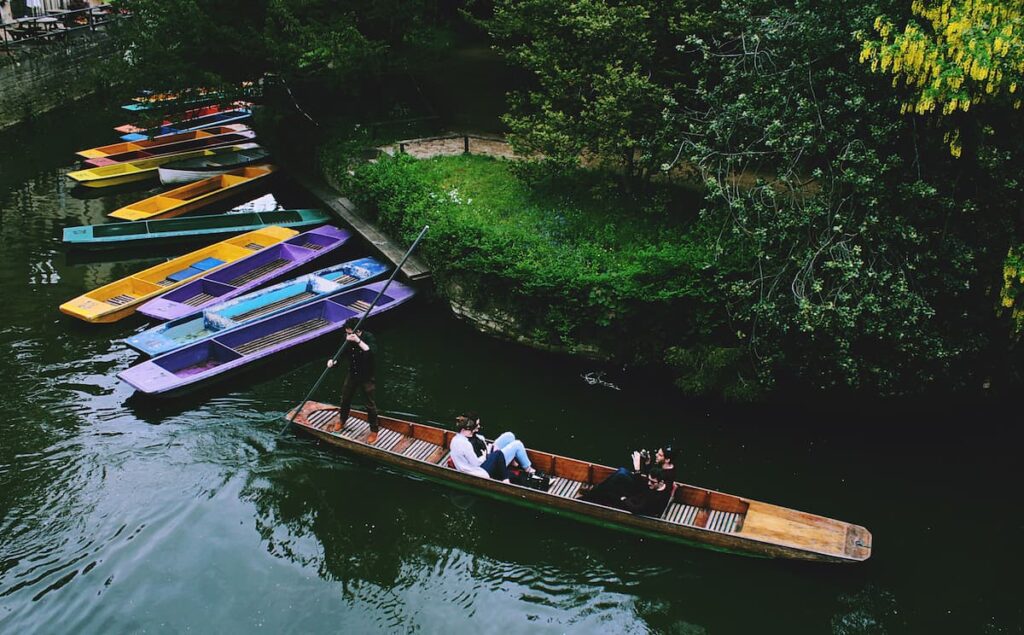
Falmouth Quay Punt
The Falmouth Quay Punt is a traditional wooden punt that is used for fishing and transportation in the waters around Falmouth, Cornwall. These boats are typically around 20 feet long and are propelled by a single oar or a punt pole. Visitors to Falmouth can take a guided tour of the harbor in a Falmouth Quay Punt, which offers a unique perspective on the town’s maritime history.
Norfolk Punt
The Norfolk Punt is a traditional sailing boat that is native to the Norfolk Broads in England. These boats are typically around 20 feet long and are characterized by their distinctive gaff rig and shallow draft. The Norfolk Punt is a popular choice for sailing enthusiasts, and visitors to the area can rent a punt and explore the beautiful waterways of the Broads.
Punting in Canada and Australia
Punting is not just limited to England. Visitors to Canada can explore the beautiful waterways of Banff National Park in a traditional wooden punt, while visitors to Australia can take a guided tour of the Yarra River in Melbourne in a modern electric punt.
Thames Valley Skiff Club and Wraysbury Skiff and Punting Club
The Thames Valley Skiff Club and Wraysbury Skiff and Punting Club are two of the most well-known clubs for punting and rowing in England. These clubs offer a range of activities for members, including punting, rowing, and social events.
The Skiff Club
The Skiff Club is a rowing and punting club that is based on the River Thames in Teddington, England. The club was founded in 1895 and has a rich history of rowing and punting. Visitors to the area can rent a punt and explore the beautiful waterways of the Thames.
Punting is a fun and relaxing way to explore the waterways of the world. Whether visitors are looking to explore the historic cities of England or the beautiful landscapes of Canada and Australia, there is a punt boat and location to suit every taste and budget.
Safety and Stability of Punt Boats
Punt boats are generally considered to be safe and stable vessels. Their flat-bottomed design and square-cut bow make them ideal for use in shallow waters and small rivers. The stability of the punt boat is enhanced by the fact that it sits low in the water and has a wide beam. This makes it less likely to tip over or capsize, even in choppy waters.
Punt boats are propelled by a pole, which is pushed against the river bed by the punter. This method of propulsion is not only traditional but also safe. Unlike other types of boats that use motors or oars, there is no risk of getting entangled in the till or losing control of the boat due to a mechanical failure.
Fishermen often use punt boats because they are stable and provide a good platform for casting and reeling in fish. However, it is important to ensure that the weight distribution on the boat is even to maintain its stability. Overloading the boat, or having too much weight on one side, can cause it to become unstable and tip over.
While punt boats are generally safe, it is still important to take precautions when boating. Always wear a life jacket, especially when boating in deep or fast-moving water. Avoid boating under the influence of alcohol or drugs, and be mindful of weather conditions. If the water becomes too rough, it is best to return to shore and wait for better conditions.
In conclusion, punt boats are safe and stable vessels that are ideal for use in shallow waters and small rivers. Their traditional method of propulsion and low center of gravity makes them less prone to accidents and mechanical failures. However, it is still important to take precautions and follow boating
Frequently Asked Questions
What is a punt boat used for?
A punt boat is designed for use in small rivers and shallow water. It is commonly used for leisure activities, such as punting, which involves propelling the boat by pushing against the river bed with a pole. Punt boats can also be used for fishing and transportation of goods.
What distinguishes a punt boat from other types of boats?
A punt boat is a flat-bottomed boat with a square-cut bow. This design allows the boat to easily navigate shallow waters and makes it stable. Unlike other types of boats, punt boats are propelled by a pole rather than an oar or motor.
What is the history of punt boats?
Punt boats have been used for centuries in Europe, particularly in England. They were originally used for transportation of goods and people along small rivers and canals. Over time, they became popular for leisure activities such as punting.
How is a punt boat propelled?
A punt boat is propelled by a pole, which is pushed against the river bed. The punter stands at the rear of the boat and uses the pole to push the boat forward. The flat bottom of the boat allows it to easily glide along shallow waters.
What are some common features of a punt boat?
Punt boats typically have a flat bottom, a square-cut bow, and a pointed stern. They are usually made of wood or fiberglass and can range in size from small boats that hold one or two people to larger boats that can hold four or more.
What are some popular destinations for punting?
Punting is a popular activity in many cities, particularly in England. Some of the most popular destinations for punting include the River Cam in Cambridge, the River Cherwell in Oxford, and the River Avon in Stratford-upon-Avon. Punting is also popular in other parts of Europe, such as Venice, Italy.
- Types of Gas Carriers as per IGC Code – April 22, 2025
- Wind-Assisted Propulsion Systems (WAPS): A Game Changer for Maritime Decarbonization – February 6, 2025
- 10 Boat Salvage Yards in California – January 25, 2025





